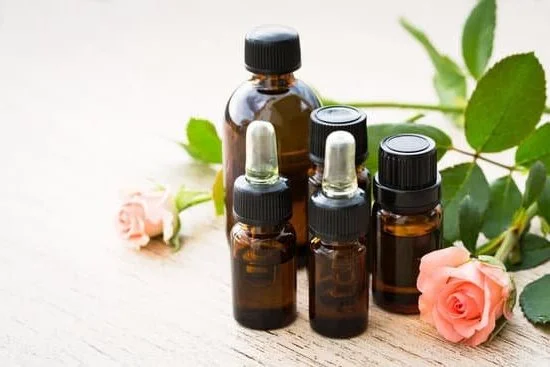Do you often suffer from painful leg cramps that disrupt your daily activities? If so, you are not alone. Leg cramps can be both uncomfortable and frustrating, but there are natural remedies available to help alleviate the symptoms. Aromatherapy oils have been gaining recognition for their potential to relieve leg cramps, offering a holistic approach to managing this common ailment.
Leg cramps occur when the muscles in the legs contract involuntarily, causing sudden pain and discomfort. These cramps can be caused by various factors such as dehydration, muscle fatigue, overexertion, or mineral deficiencies. Understanding the underlying causes of leg cramps is essential in finding effective solutions for relief.
Aromatherapy oils have emerged as a popular alternative remedy for alleviating leg cramps. Derived from natural plant extracts, these oils offer soothing and relaxing properties that may help ease muscle tension and promote better circulation in the affected areas. By incorporating aromatherapy into your wellness routine, you can effectively manage and reduce the frequency of leg cramps.
The Power of Aromatherapy
Aromatherapy oils have been used for centuries as natural remedies for a variety of ailments, including muscle pain and cramps. When it comes to leg cramps, aromatherapy oils can be effective in alleviating the discomfort and promoting relaxation in the affected muscles. The use of essential oils in aromatherapy can help reduce the frequency and intensity of leg cramps, making it a popular choice for those seeking natural relief.
Benefits of Aromatherapy Oils for Leg Cramps
Aromatherapy oils work by targeting the muscles and nerves, helping to relax tension and reduce inflammation. Many essential oils have analgesic, anti-inflammatory, and muscle-relaxing properties that can be beneficial for addressing leg cramps. When applied or inhaled, these oils can provide relief from the pain and discomfort associated with leg cramps, while also promoting overall well-being.
How Aromatherapy Oils Alleviate Leg Cramps
The use of aromatherapy oils for leg cramps is based on their ability to stimulate olfactory receptors in the nose, which then send signals to the brain’s limbic system. This area of the brain is responsible for regulating emotions, stress responses, and pain perception.
Certain essential oils can trigger a calming effect on the nervous system, reducing stress and tension in the muscles that may contribute to leg cramping. Additionally, some oils have vasodilating properties that can improve circulation in the affected areas, aiding in the relief of leg cramps.
Choosing the Right Aromatherapy Oils
When selecting aromatherapy oils for leg cramp relief, it’s important to choose high-quality essential oils known for their muscle-relaxing and anti-inflammatory properties. Some popular choices include lavender oil, peppermint oil, eucalyptus oil, marjoram oil, and chamomile oil.
Each of these oils offers unique benefits that can aid in relieving leg cramps when used appropriately. It is important to note that individuals with existing medical conditions or sensitivities should consult with a healthcare professional before using aromatherapy oils for leg cramp relief.
Choosing the Right Aromatherapy Oils
When it comes to choosing the right aromatherapy oils for alleviating leg cramps, it’s important to consider the specific properties of each oil and how they can address the issues leading to these uncomfortable muscle contractions. While there are many essential oils known for their muscle-relaxing and pain-relieving properties, some stand out as particularly effective in easing leg cramps.
Lavender Oil
Lavender essential oil is one of the most widely known and used aromatherapy oils for its calming and relaxing effects. It is believed to help reduce muscle tension and promote a sense of relaxation, making it a popular choice for addressing leg cramps. When applied topically or inhaled through steam inhalation or diffusers, lavender oil can help soothe the muscles and alleviate discomfort associated with leg cramps.
Peppermint Oil
Peppermint essential oil is another highly effective option for alleviating leg cramps due to its cooling sensation and analgesic properties. The menthol present in peppermint oil provides a numbing effect that can help reduce the intensity of muscle spasms and provide relief from pain. Its invigorating scent can also promote better blood circulation, which may aid in reducing muscle tension and promoting faster recovery from leg cramps.
Eucalyptus Oil
Eucalyptus essential oil has anti-inflammatory and analgesic properties that make it a great choice for addressing leg cramps. Its cooling effect helps soothe muscle discomfort, while its anti-inflammatory properties may help reduce swelling or inflammation that could be contributing to the severity of the cramps. Eucalyptus oil can be used in massage blends or added to bath water for a relaxing soak that may ease leg cramp symptoms.
In addition to these three oils, other options such as chamomile, rosemary, and marjoram essential oils are also commonly recommended for their muscle-relaxing and pain-reducing properties in managing leg cramps. Choosing the right aromatherapy oil ultimately depends on personal preference, compatibility with other health conditions or medications, and individual response to each oil’s therapeutic effects.
How to Use Aromatherapy Oils for Leg Cramps
Using aromatherapy oils for leg cramps can be an effective way to alleviate discomfort and promote relaxation. There are several application methods and techniques that can maximize the benefits of these oils. One popular method is topical application, where the oil is diluted with a carrier oil and massaged directly onto the skin over the affected area. This allows the oil to be absorbed into the bloodstream through the skin, providing fast relief.
Another technique is inhalation, where the aroma of the essential oils is inhaled using a diffuser or by simply adding a few drops to a bowl of hot water. Inhaling the aroma of these oils can help relax muscles and ease tension in the legs, providing relief from leg cramps. Additionally, adding a few drops of aromatherapy oils to a warm bath can help soothe tired muscles and relieve discomfort associated with leg cramps.
It’s important to note that when using aromatherapy oils for leg cramps, it’s crucial to follow safety guidelines and use proper dilution techniques as undiluted essential oils may cause skin irritation. By incorporating these application methods and techniques into your self-care routine, you can effectively harness the healing properties of aromatherapy oils for leg cramp relief.
| Application Methods | Techniques |
|---|---|
| Topical Application | Diluting with Carrier Oils |
| Inhalation | Using Diffuser or Hot Water |
| Warm Bath | Adding Aromatherapy Oils |
DIY Aromatherapy Blends for Leg Cramp Relief
When it comes to using aromatherapy oils for leg cramps, creating your own blends can be a fun and effective way to customize your treatment. Here are some simple recipes and instructions for DIY aromatherapy blends that can help alleviate leg cramps:
- Lavender and Peppermint Blend: Combine 4 drops of lavender oil with 3 drops of peppermint oil. Dilute the blend with a carrier oil, such as coconut or almond oil, and massage it onto the affected area.
- Rosemary and Eucalyptus Blend: Mix 5 drops of rosemary oil with 2 drops of eucalyptus oil. Add the blend to a warm bath and soak in it for at least 20 minutes to relieve leg cramps.
- Ginger and Chamomile Blend: Blend together 3 drops of ginger oil with 4 drops of chamomile oil. Use this blend in a diffuser to create a calming atmosphere that may help reduce muscle tension and alleviate leg cramps.
Creating your own DIY aromatherapy blends allows you to experiment with different combinations of oils to find what works best for you. It’s important to remember that essential oils are potent and should be used with caution. Always follow proper dilution guidelines and consult with a qualified aromatherapist if you have any concerns.
In addition to these specific blends, you can also explore other essential oils known for their relaxing and pain-relieving properties, such as marjoram, juniper, and black pepper. Keep in mind that individual preferences may vary, so don’t be afraid to mix and match different oils to create your own signature blend for addressing leg cramps effectively.
Remember that while DIY aromatherapy blends can provide relief from occasional leg cramps, they are not a substitute for medical treatment or professional healthcare advice. If you experience chronic or severe leg cramping, it is important to seek guidance from a healthcare provider to address any underlying health issues contributing to the discomfort.
The Science Behind Aromatherapy
Leg cramps can be a common and uncomfortable occurrence for many people, often caused by muscle fatigue or dehydration. Aromatherapy oils have been used for centuries to alleviate various ailments, including leg cramps. The use of aromatherapy oils for leg cramps is based on the idea that certain scents can trigger physiological responses in the body, helping to relax muscles and reduce discomfort.
When it comes to understanding how aromatherapy oils work to relieve leg cramps, it’s important to consider the sense of smell and its impact on the brain. The olfactory system, which is responsible for our sense of smell, is directly linked to the limbic system in the brain, which plays a role in regulating emotions, behavior, and memory. This connection means that when we inhale certain aromas, they can have a direct effect on our mood and physical wellbeing.
Additionally, specific essential oils used in aromatherapy have properties that can help relax muscles and reduce inflammation, which are often contributing factors to leg cramps. For example, oils like lavender and peppermint have been found to have analgesic (pain-relieving) and muscle-relaxant properties that can be beneficial for relieving leg cramps. This makes them ideal choices for incorporating into an aromatherapy blend for leg cramp relief.
| Aromatherapy Oil | Properties |
|---|---|
| Lavender | Analgesic, muscle relaxant |
| Peppermint | Analgesic, anti-inflammatory |
| Eucalyptus | Anti-inflammatory, cooling sensation |
Other Natural Remedies for Leg Cramps
When it comes to managing leg cramps, aromatherapy oils can be a valuable tool. However, there are also other natural remedies and complementary therapies that can help alleviate the discomfort of leg cramps. These additional options can provide further support in addressing the root causes of leg cramps and promoting overall musculoskeletal health.
One popular complementary therapy to aromatherapy for leg cramps is massage therapy. Massaging the affected area with gentle, circular motions can help relax tense muscles and improve circulation, which may aid in reducing the frequency and severity of leg cramps. Additionally, incorporating essential oils into the massage oil can enhance the therapeutic benefits by providing a soothing and calming effect on the muscles.
Another natural remedy to consider is incorporating certain minerals and vitamins into your diet. Deficiencies in nutrients such as magnesium, potassium, and calcium have been linked to an increased risk of muscle cramps. Consuming foods or supplements rich in these essential nutrients can support muscle function and reduce the likelihood of experiencing leg cramps.
In addition to massage therapy and nutritional adjustments, hydration plays a crucial role in preventing leg cramps. Dehydration can lead to electrolyte imbalances and muscle fatigue, making individuals more susceptible to experiencing painful muscle spasms.
Ensuring adequate fluid intake, particularly water and electrolyte-rich beverages, is essential for maintaining proper muscle function and minimizing the occurrence of leg cramps. When used in conjunction with aromatherapy oils for leg cramp relief, these complementary therapies offer a holistic approach to managing this common ailment.
When to Seek Medical Attention
Leg cramps can be a common and extremely uncomfortable experience for many people, often occurring in the calf muscles during sleep or physical activity. While aromatherapy oils can provide relief for some individuals, it’s important to recognize when leg cramps may require professional medical attention. Here are some signs that indicate it may be time to seek help:
1. Frequency and Severity: If you experience leg cramps frequently and the pain is particularly severe, it’s essential to consult a healthcare professional. Chronic and intense leg cramps could signify an underlying health issue that needs to be addressed by a medical professional.
2. Changes in Symptoms: If you notice any changes in your leg cramp symptoms, such as increased frequency, duration, or the appearance of new symptoms, it’s crucial to seek medical advice. These changes could be indicative of an underlying condition that requires evaluation and treatment.
3. Impact on Daily Life: If leg cramps are significantly impacting your daily activities, causing persistent discomfort or affecting your ability to perform routine tasks, it’s important to discuss this with a healthcare provider. They can help determine the cause of your leg cramps and recommend appropriate treatment options.
In some cases, leg cramps can be a symptom of an underlying health condition such as peripheral artery disease or nerve compression, so it’s crucial not to dismiss persistent or severe leg cramps. Seeking medical attention when necessary can help identify the root cause of your discomfort and ensure that you receive appropriate care.
Remember that while aromatherapy oils for leg cramps can provide temporary relief for many individuals, they are not meant to replace professional medical advice or treatment. It’s always best to consult with a healthcare provider if you have concerns about persistent or severe leg cramps.
Conclusion
In conclusion, aromatherapy oils have proven to be a valuable and effective natural remedy for alleviating leg cramps. The power of aromatherapy lies in its ability to provide relief and relaxation through the use of essential oils.
By choosing the right oils and employing the appropriate application techniques, individuals can experience significant improvement in their leg cramps. Whether using pre-made blends or creating their own DIY recipes, the options are plentiful for those seeking natural solutions to this common ailment.
The science behind aromatherapy reveals how these oils work to relieve leg cramps by stimulating the olfactory system and triggering various physiological responses in the body. Through inhalation or massage, the oils can help reduce muscle tension, inflammation, and pain associated with leg cramps. Additionally, complementary therapies such as stretching exercises, hydration, and proper nutrition can amplify the benefits of using aromatherapy oils for leg cramp relief.
It’s important to note that while aromatherapy can be highly beneficial for managing leg cramps, it is essential to seek medical attention if the cramps persist or become more severe. Professional care may be necessary to address any underlying health issues causing the leg cramps. Nonetheless, embracing the healing power of aromatherapy oils for leg cramps can provide individuals with a safe and natural alternative for finding relief from this discomforting condition.
Frequently Asked Questions
What Essential Oils Are Best for Cramps?
Essential oils that are best for cramps include lavender, peppermint, eucalyptus, and chamomile. These oils have natural anti-inflammatory and muscle-relaxing properties that can help alleviate cramping.
What Is Essential for Leg Cramps?
A key essential for leg cramps is proper hydration. Dehydration can lead to muscle cramps, so it’s important to drink enough water throughout the day to keep the muscles functioning properly and prevent cramping.
What Is the Best Instant Relief for Leg Cramps?
The best instant relief for leg cramps is stretching and massaging the affected muscle. This can help relax the muscle and provide immediate relief from the cramp. Additionally, applying heat or cold packs to the area may also help ease the discomfort.

Are you looking for a natural way to improve your health and wellbeing?
If so, aromatherapy may be the answer for you.





